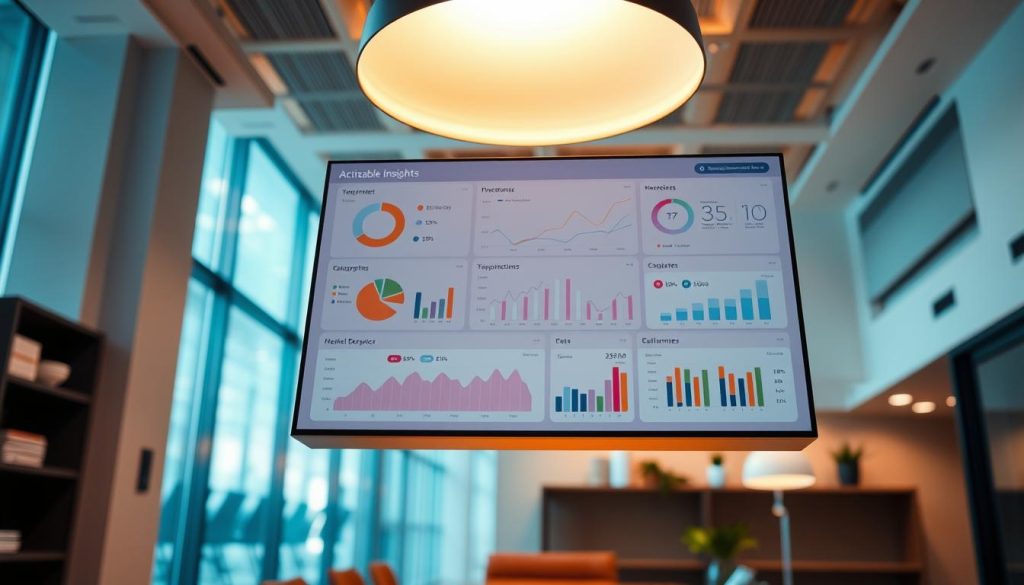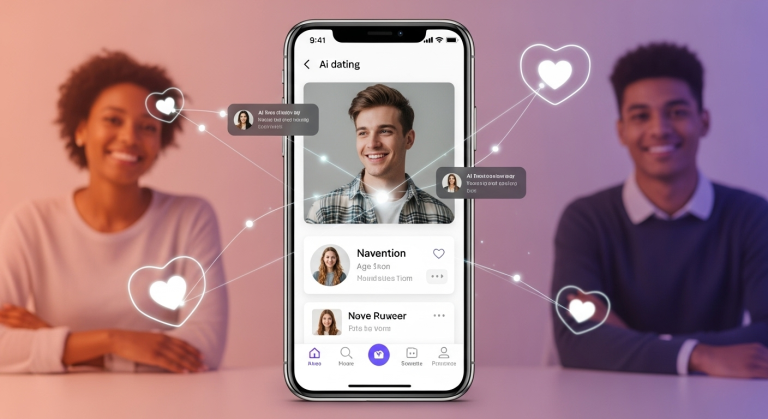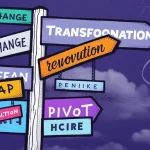Table of Contents
U.S. teams are excited to share that advanced tools can cut the time it takes to get usable insights by half, all while keeping things rigorous. These innovative solutions leverage the latest in artificial intelligence and data analytics, allowing teams to sift through vast amounts of information quickly and efficiently. By automating many of the time-consuming aspects of data collection and analysis, these tools empower researchers to focus on interpreting results and deriving actionable strategies.

This guide is here to show you how these fantastic gains happen. By harnessing AI technology, organizations can transform raw data into meaningful insights almost instantaneously. This rapid processing capability allows teams to respond to market changes with unprecedented speed and accuracy. With faster insights, broader data coverage, and smarter decisions, researchers and cross-functional teams can now act with confidence. This newfound agility not only enhances the speed of decision-making but also ensures that teams are making informed choices based on comprehensive data sets, which ultimately leads to more effective marketing and product strategies.
We’ll take a friendly, practical tour of top tools and use cases, from consumer surveys and social listening to qualitative audio and video analysis. You’ll meet platforms like Quantilope and GWI Spark that make complex work accessible to nontechnical stakeholders.
Expect clear help: advice on choosing the right platform, tips for keeping data accurate, and ways to pair machine output with human judgment for better marketing, product planning, and brand work.
By the end, you’ll have ready-to-use takeaways that save time and move the needle for U.S. businesses.
Why AI-Powered Market Research Matters Right Now
Today’s tools let teams turn raw signals into clear guidance in hours, not weeks. That speed frees analysts to focus on interpretation and strategy.
From speed to scalability: the value proposition today
Faster results. Automation shrinks time-to-insight by handling repetitive tasks and heavy data crunching.
Bigger coverage. Platforms scale to millions of responses so businesses can track national and multi-market trends without huge cost increases.
How AI pairs with human expertise for better decisions
Predictive signals surface early trends so marketing and brand leaders can act before a shift becomes a crisis.
Analysts and strategists remain essential. They tune questions, validate outputs, and convert findings into actionable insights that fit business context.
| Benefit | What It Delivers | Who Uses It | Outcome |
|---|---|---|---|
| Speed | Real-time dashboards and fast analysis | Insights teams, marketers | Hours-to-decision |
| Scalability | Large-scale data ingestion | National programs, cross-market teams | Consistent coverage |
| Quality | Governance and sampling controls | Analysts, data teams | Reliable findings |
| Collaboration | Natural language queries and clear reports | Product, brand, and exec teams | Faster alignment |
ai market research: Key Capabilities and Where It Shines
Modern platforms bundle survey design, live dashboards, and predictive models so teams move from questions to action fast.
Survey automation and data analysis for faster results
Survey automation shortens the cycle from questionnaire build to fielding and dashboards. Sampling and quality checks stay in place while teams get near-real-time readouts.
Classifiers and NLP pull themes from open answers and turn qualitative language into numbers for quicker reporting. That speeds insight delivery and reduces manual coding.
Social listening, sentiment, and trend detection
Social listening tools score sentiment, cluster topics, and flag anomalies so teams spot trends early. Image recognition adds context by reading logos and scenes in user posts.
Competitive intelligence and forecasting
Automated tracking watches competitor pages, pricing, and creative tests and sends alerts when changes matter. Forecasting models blend past performance with live signals to predict demand and product adoption.
- Audience discovery profiles who is talking or buying to guide targeting.
- Platforms deliver prioritized opportunity areas and short summaries for busy teams.
- Expert oversight validates assumptions so outputs match product roadmaps and category realities.
Note: These tools accelerate and augment work, but solid questionnaire design and robust methods remain the foundation of valid insights.
How to Choose an AI Research Platform: Criteria for U.S. Teams
Choosing the right platform starts with the questions your team needs answered and the outcomes your business expects.
Data accuracy, integration, and usability
Prioritize platforms that show sampling rigor, transparent methods, and steady refresh cadence. That ensures you can defend results to stakeholders.
Usability matters: look for natural language search, guided templates, and intuitive dashboards so nontechnical teams run surveys and analysis quickly.
Confirm integrations to CRMs, BI, and collaboration tools. Seamless connectors cut manual work and keep data lineage intact.
Validate that the platform scales across U.S. regions and supports advanced methods without slowing performance.
Model total cost of ownership: compare license fees to time saved, better decisions, and revenue impact from stronger targeting.
- Start with goals: audience discovery, brand tracking, concept testing, or competitive monitoring.
- Inspect reporting: configurable dashboards, exports, and storytelling features that help socialize insight.
- Check services: onboarding, training, and advisory support speed adoption and improve outcomes.
- Shortlist vendors with clear roadmaps and strong data governance to keep your investment compliant and future-proof.
Platforms such as Quantilope position as end-to-end consumer intelligence, while others emphasize ongoing survey panels and certainty of insight. Match the tool to the use cases you’ll actually run.
Roundup: AI Tools for Consumer Insights and Surveys
Below are practical summaries of four platforms that speed survey creation and deliver usable consumer insights for product and brand teams.
GWI Spark
GWI Spark offers a chat-style interface to nearly a million monthly respondents across 50+ markets. Ask questions in plain language and get interactive charts and quick stats for audience profiling.
Strengths: large samples, visual exploration, and fast validation for marketing and branding work.
Quantilope
Quantilope is an end-to-end platform that automates study creation, scoring, and reporting. It supports concept and product tests with predictive models to forecast outcomes.
Templates and dashboards speed the path from fielding to stakeholder-ready results for researchers and teams.
SurveyMonkey Genius
SurveyMonkey Genius helps with question creation, boosts response quality, and automates open-ended text analysis. It also links survey collection to CRM and marketing systems.
That makes it easier to turn customer feedback into actions.
Zappi
Zappi focuses on rapid concept and creative testing. Its Quick Reports summarize themes and performance signals in seconds so brands can make fast go/no-go decisions.
- Use GWI Spark for fast audience sizing and large-sample evidence.
- Choose Quantilope when you need depth, templates, and predictive data analysis.
- Pick SurveyMonkey Genius to improve creation and close the feedback loop.
- Lean on Zappi for quick creative validation and iterative testing.
Tip: Match each tool’s strengths to your needs—survey depth, creation speed, reporting polish, and integration maturity—so teams get reliable results without losing time.
Roundup: Social Listening, Sentiment, and Brand Intelligence
Social channels surface what people say and show; the right platforms turn that stream into clear brand signals.
Brandwatch: real-time sentiment from millions of posts
Brandwatch uses Iris to analyze millions of online posts for sentiment, trends, and emerging topics. Its dashboards surface spikes and sources so teams act quickly on reputation or campaign shifts.
YouScan: visual listening and image recognition
YouScan reads logos, scenes, and consumer images to add context that text-only systems miss. This visual layer improves audience understanding and helps refine creative and placement strategies.
Crayon: competitive intelligence across moves
Crayon watches competitor sites, pricing, and messaging. Teams use its alerts to benchmark performance and spot opportunities before rivals change course.
Morning Consult: public opinion and demographic depth
Morning Consult blends ongoing polling with demographic cuts and forecasts. It supports brand tracking, consumer confidence metrics, and political pulse checks for timely decision making.
Use cases include reputation management, social campaign planning, crisis detection, and benchmarking against competitors. Visualization and reporting features turn raw data into executive-ready insights. Integrations move social intelligence into BI and analytics stacks so teams get a fuller view alongside surveys and panels.
| Tool | Core strength | Key use case |
|---|---|---|
| Brandwatch | Real-time sentiment & trend detection | Reputation monitoring; rapid response |
| YouScan | Image recognition and visual context | Creative validation; visual trend spotting |
| Crayon | Competitive activity tracking | Benchmarking; threat/opportunity alerts |
| Morning Consult | Large-scale polling with demos | Brand tracking; demographic insights |
Measurement should include share-of-voice lifts, sentiment shifts, and campaign performance against baselines. For best results, pair these tools with survey platforms to triangulate public sentiment with private responses and deliver more confident, timely decisions.
Roundup: Data Collection, Web Scraping, and Desk Research
This section surveys practical collection and scraping tools that feed steady streams of competitive intelligence and trend signals.

Browse AI: No-code scraping for prices, reviews, and competitor updates
Browse AI makes it simple to set up robots that extract product prices, customer reviews, and competitor content without coding.
Send structured data into your analytics stack to build continuous dashboards for pricing and promotional planning.
Perplexity: Fast, fact-backed desk synthesis
Perplexity delivers concise, citation-backed summaries that speed desk work and brief creation.
Pair it with internal repositories to accelerate knowledge synthesis for researchers and decision-makers.
Market Insights AI: Automated scans and predictive signals
Market Insights AI automates periodic scans, runs predictive analytics, and highlights rising categories and white-space product ideas.
Use scheduled pulls to create repeatable datasets and reduce manual lift for product and strategy teams.
Quality matters: monitor extraction accuracy, de-duplication, and change detection so results stay trustworthy and defensible.
- Feed scraped data into dashboards for continuous competitive monitoring.
- Blend scraped signals with surveys and social listening for a triangulated view.
- Plan services and governance for compliance when scraping at scale.
| Tool | Primary use | Best for |
|---|---|---|
| Browse AI | Price, review, and content extraction | Competitive dashboards; promo planning |
| Perplexity | Desk synthesis and citation-backed summaries | Briefing docs; literature scans |
| Market Insights AI | Automated scans and predictive analytics | Trend detection; product opportunity identification |
Practical apps: use these platforms to inform pricing strategy, assortment planning, and competitive playbooks rooted in continuously updated intelligence.
Roundup: Qualitative Analysis, Audio/Video, and Experience Insights
When you pair spoken feedback with session recordings, you get a fuller view of customer experience.
Speak AI automates transcription and text processing for interviews and focus groups. Upload audio and video files to get accurate transcripts, sentiment scoring, and topic extraction that speed qualitative interpretation.
Turn hours of recordings into short themes, pulled quotes, and custom reports that stakeholders can act on. These deliverables help teams build clip reels, insight decks, and journey maps for executive review.
Hotjar
Hotjar combines session replays, heatmaps, and AI surveys to reveal where users struggle and why. Visual tools show click patterns, scroll depth, and friction points so product and marketing teams prioritize fixes that improve experience metrics.
Appen
Appen supplies high-quality labeled data for speech, vision, and NLP tasks at a global scale. Use these annotated datasets to improve models that process audio and video and to boost the accuracy of sentiment and theme detection for consumer work.
- When to use each tool: Speak AI for interviews and focus groups; Hotjar for usability and journey testing; Appen for training and validation datasets.
- Quality matters: check transcription accuracy, language coverage, and labeling consistency so teams trust qualitative outputs.
- Blend methods: combine text analytics and video review with quantitative dashboards to surface motivations, emotions, and unmet needs.
Practical outputs include clip reels, highlight quotes, heatmap snapshots, and short insight decks that make findings easy to act on across product, UX, and brand teams.
Workflow Tips: Turning Data into Actionable Insights
Good workflows make insights practical: start with the decision you need to make, not the data you can collect. Define audiences, success metrics, and the outcomes you expect so every task maps to a business choice.

Build a mixed-methods plan: pair surveys, social listening, qualitative uploads, and segmentation to triangulate findings and cut blind spots. Use concept testing and brand tracking alongside CX pulses for richer signals.
Standardize intake with templates for surveys, interview guides, and secondary queries. Automate routine pulls and set alerts so your team spends less time on processing and more on interpretation.
- Create living dashboards with role-based views for execs, product, and marketing to speed reporting and action.
- Close the loop: route feedback and survey results into your CRM and activation tools to trigger timely customer-centered steps.
- Keep a methods playbook for sample sizes, question banks, and analysis checklists so researchers run repeatable, defensible studies.
Make insights sticky: deliver plain-language recommendations, owners, and deadlines. Invest in training on the platform and analytics so teams can lift the quality of work. Measure ROI by tracking time saved, decision accuracy, and campaign lift to improve results over time.
Conclusion
Match platform strengths to your goals: choose a core research platform for surveys and audience sizing, a listening tool for brand tracking, and a qualitative solution for audio and video depth.
Prioritize robust data, transparent methods, and governance so findings stay defensible as you scale. Invest in training, templates, and small pilots to speed adoption and reduce errors.
Next steps: shortlist two to three vendors, run a pilot on a real use case, and measure time-to-insight and decision impact. With the right tools and workflows, U.S. teams can turn complex signals into actionable insights—consistently and on time.








